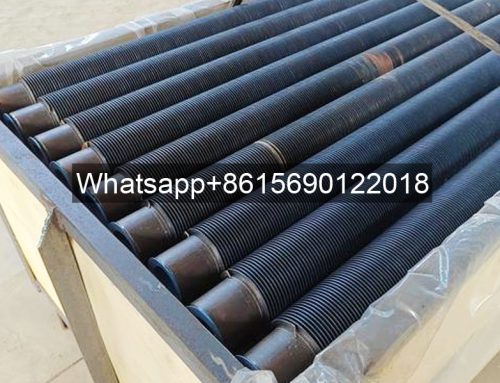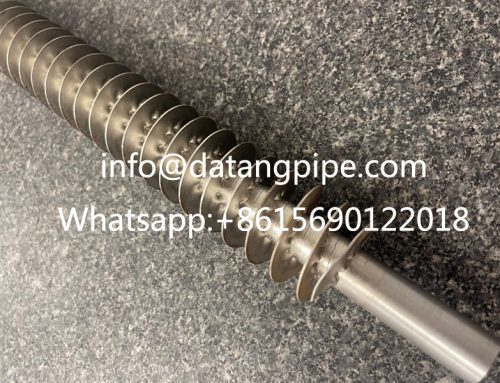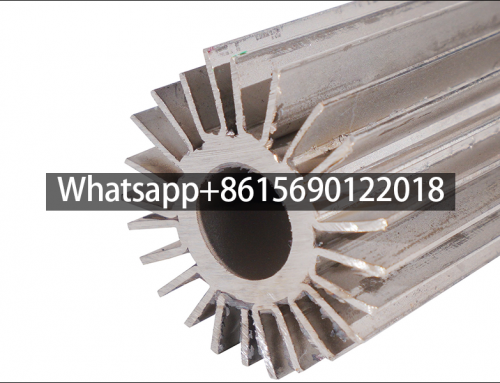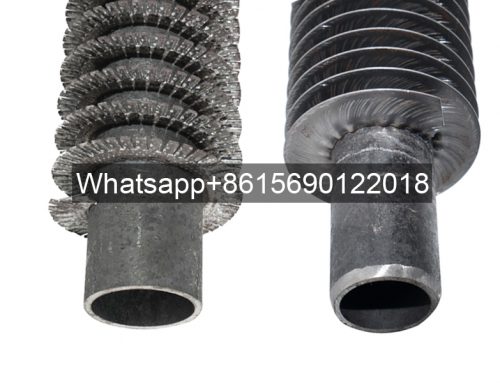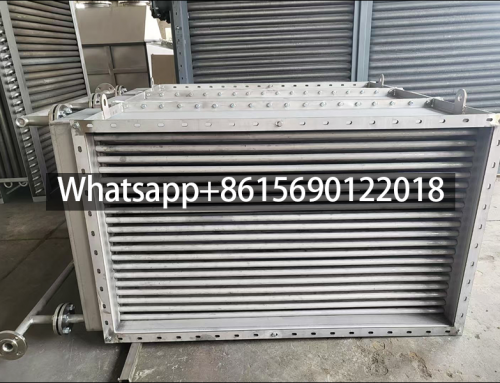Basic introduction of spiral finned tube
Spiral finned tubes have been widely used in heat recovery of boiler economizers, air preheaters and waste heat boilers, as well as heat exchange equipment in various fields such as chemical industry and pressure vessels. The capacity of the unit used in the boiler is also increased from small to large, and the application is increasing day by day. There are many professional manufacturers in China that can produce high-frequency welded and brazed spiral finned tubes, and the quality of finned tube production equipment and technology has reached the requirements of advanced foreign standards from the introduction, digestion and absorption to self-development, design and manufacture. .
Advantages of using finned tubes:
1) The heat exchange area is increased in the effective space to improve the heat transfer effect.
2) Reduce the occupied space of the heat transfer surface and make it smaller, especially suitable for quick-installed boilers.
3) Reduce equipment cost and improve equipment safety.
4) The running cost is reduced due to the reduction of the pressure drop on the water side, etc.
5) The rigidity of the finned tube is increased, which improves the shock resistance of the tube.
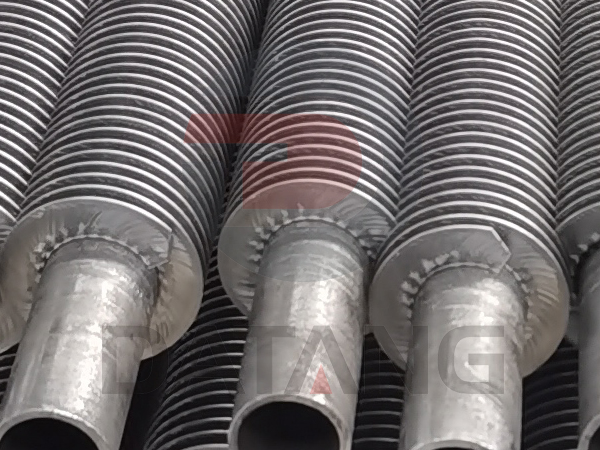
Spiral finned tubes
Performance evaluation index of spiral finned tube
There are three main manufacturing methods of spiral finned tubes. In order to facilitate analysis and comparison, spiral finned tubes are divided into welded finned tubes (high-frequency welding, brazing) and integral spiral finned tubes for comparison.
Welding rate is also called fusion rate.
The welding rate is an evaluation index for the width and total length of the fin weld. JB/T 6512-92 “Technical Conditions for the Manufacturing of High Frequency Resistance Welded Spiral Fin Tubes for Boilers” stipulates that the weld fusion rate in the width direction of the steel strip is not less than 80%. Although the length direction is not mentioned, it can be understood that not less than 80% along the entire length of the fin is qualified.
The unfused length of the local weld shall not be greater than the diameter of the pipe and not more than 50mm, and the number of unfused parts shall not exceed 2 per meter, otherwise repair welding shall be carried out.
HG/T 3181-1989 “High Frequency Resistance Welding Spiral Finned Tube” stipulates that the total length of the actual weld is not less than 90% of the total length of the fin, and the average width of the weld is not less than 80% of the width of the fin.
The welding rate of high-frequency resistance welded spiral finned tubes can actually reach 90%-95%. The welding rate of brazed spiral finned tubes is slightly higher than that of high-frequency welding, but the welding rate is not easy to check.
Integral spiral finned tube, as the name suggests, the fins are generated from the tube, there is no welding problem of the fins, and there is no need to check the welding rate.
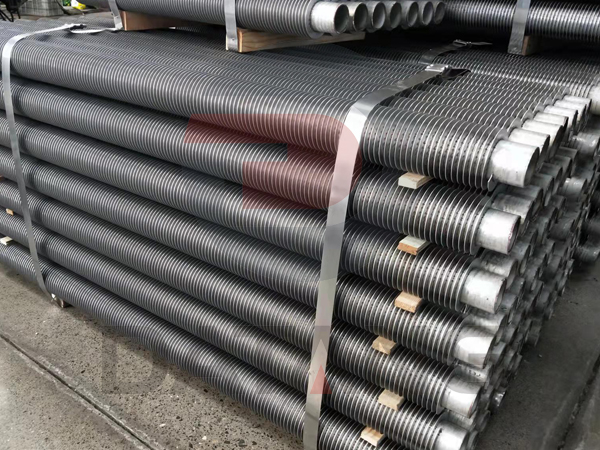
High Frequency Welding Finned Tube
Weld Tensile Strength
JB/T 6512-92 stipulates that the tensile strength of the welded specimen shall not be less than 196MPa. HG/T 3181-92 does not provide for this.
For high-frequency resistance welded spiral finned tubes, the tensile strength of the weld seam of the manufacturer has reached more than 200MPa, or even more than 300MPa. The tensile strength of the welded seam of the brazed spiral fin tube can basically meet this requirement.
The fins of the integral spiral finned tube are extruded and rolled from the billet tube, and there is no problem of the tensile strength of the weld. The strength of the connection between the fin and the tube is equal to the tensile strength of the corresponding tube, or even slightly higher.
Post weld heat treatment
The heat-affected zone of the high-frequency resistance welded spiral fin tube is very small. The foreign standard stipulates that the heat-affected zone is less than 0.8mm, and the measured heat-affected zone of some domestic manufacturers’ products is less than 0.5mm. Therefore, some standards do not specify whether heat treatment is performed after welding of high-frequency resistance welded spiral fin tubes. The JB/T 6512-92 standard stipulates that the finned tube made of alloy steel should be subjected to stress relief heat treatment after welding.
The production process of the integral spiral finned tube is actually another extrusion and rolling process of the original thick-walled billet tube at high temperature. After extrusion and rolling at high temperature, there is no need for stress relief heat treatment at all.
Heat transfer effect
The heat transfer effect of high frequency resistance welding and brazing spiral finned tubes is at least 4 times higher than that of light tubes. The heat transfer effect of toothed finned tubes is better than that of integral fins. However, it should be noted that the welding rate of the weld between the fin and the tube is not 100%, and the standard stipulates that it is only more than 80%. The unfused part has thermal resistance, which will affect the heat transfer effect.
The fins of the integral spiral finned tube are in 100% contact with the parent tube, and the small R transition between the fin root and the parent tube not only increases the stiffness and pressure bearing capacity of the fins, but also facilitates heat transfer. Its heat transfer effect is at least 5-6 times higher than that of a light tube, which is obviously better than that of high-frequency resistance welding and brazing spiral finned tubes.
Service life
The welding of the high-frequency resistance welding spiral finned tube is to apply pressure while the two metal surfaces are in contact with each other, and the welding rate is good. the service life of the tube. However, due to the weak welding, long-term use is prone to cracking of the weld, which makes the fin and the tube detach, thus affecting its heat transfer efficiency, and the finned tube has to be replaced.
The whole spiral finned tube does not have the welding problem of fins, so there is no need to worry about the occurrence of fin corrosion and cracking, and its heat transfer efficiency will not be reduced. In addition, due to the increased surface hardness of the overall spiral finned tube, which increases the wear resistance of the finned tube, and the structural features of the fin root are convenient for heat transfer, the service life of the overall spiral finned tube is equivalent to that of the finned tube raw material. The service life is at least 2-3 times that of the high-frequency welded and brazed spiral finned tubes.
Economy
The brazing spiral finned tube needs to use the third material – brazing material. During brazing, the fins need to go through the main processes of cold winding, spraying solder, sintering, etc., so the manufacturing cost is high. The high-frequency resistance welded spiral finned tube does not need a third material, and the fins are formed by one-time winding welding, so the cost is relatively low. High-frequency resistance welding and brazing of the winding end and the termination end of the spiral finned tube should be fixed by manual welding first, and then the welding can be done.
The whole spiral finned tube is made of thick-walled tubes by extrusion and rolling, without the need for a second material, eliminating the need for multiple processes in the production process such as winding and welding of high-frequency resistance welding fins, with high production efficiency and high production efficiency. low cost. In addition, since the fin root of the integral helical finned tube has a small R and a smooth transition, it is convenient for heat transfer.


